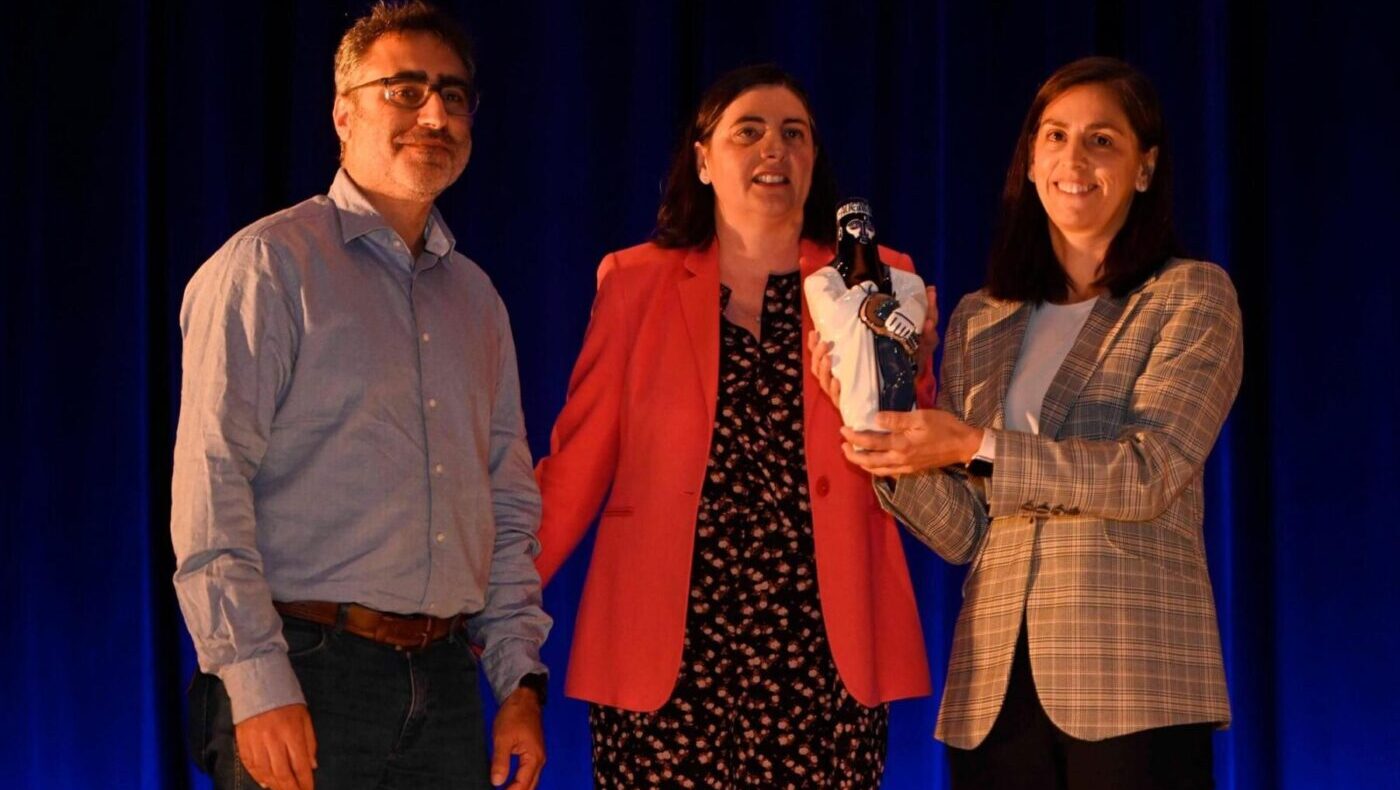The research group led by Belén Riveiro, a researcher in the Applied Geotechnologies group at the Research Center for Technologies, Energy and Industrial Processes (CINTECX), has been awarded the 2025 Galicia Critics’ Prize in the category of Research in Science and Technology for their work titled “Automated production of synthetic point clouds of truss bridges for semantic and instance segmentation using deep learning models.”
This study, developed in collaboration with Daniel Lamas, Andrés Justo, and Marío Soilán, represents a pioneering contribution to the digitalization of civil infrastructure. Published in the journal Automation in Construction, the research proposes a methodology based on deep learning models to generate synthetic point clouds of truss bridges. This technique enables the automation of inspection and maintenance processes, reducing reliance on manual and visual reviews.
The jury of the 48th edition of the Galicia Critics’ Prize in the category of Research in Science and Technology highlighted the relevance of this innovation for Galicia, given the complexity of its terrain and the abundance of bridges in hard-to-access areas. It also emphasized the positive impact in terms of safety, efficiency, and sustainability.
Among the finalists of this edition were other high-quality works, including strategies against cancer and research on Parkinson’s disease, further reinforcing the prestige of this long-standing award.
Artificial intelligence for safer and more efficient bridge inspections
Bridge inspection and maintenance require large volumes of data, typically obtained through expensive technologies such as laser scanners, which makes it difficult to apply artificial intelligence to automate these processes. To overcome this challenge, the team led by Belén Riveiro developed an innovative method to create 3D digital representations of metal bridges (known as truss bridges) without the need to scan real structures.
These representations, known as “point clouds,” are generated by specifying the dimensions and components of the bridge, allowing for a wide variety of virtual models that simulate how the structure would appear if scanned with laser technology. Using this data, an artificial intelligence system is trained to automatically identify the different parts of the bridge—a process known as semantic segmentation (recognizing each part: beams, pillars, joints, etc.) and instance segmentation (distinguishing between similar but individual elements, such as two separate beams).
Thanks to this technology, the system can analyze bridge structures without manual inspection, offering significant improvements in safety, speed, and sustainability. This is especially valuable in regions like Galicia, where the terrain makes access to many infrastructures challenging, marking a key step toward intelligent digital maintenance of bridges.

